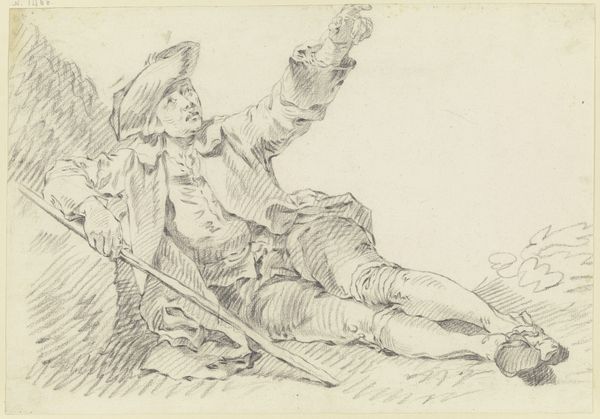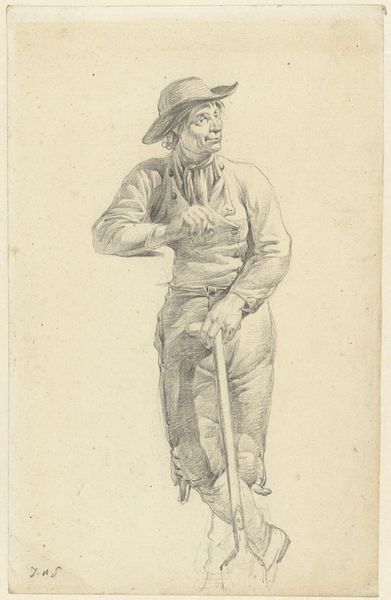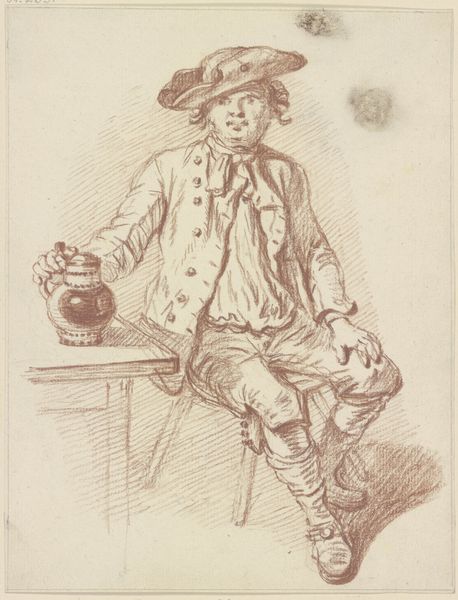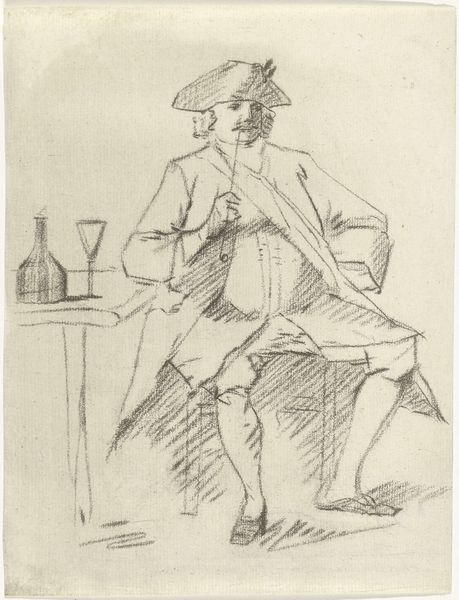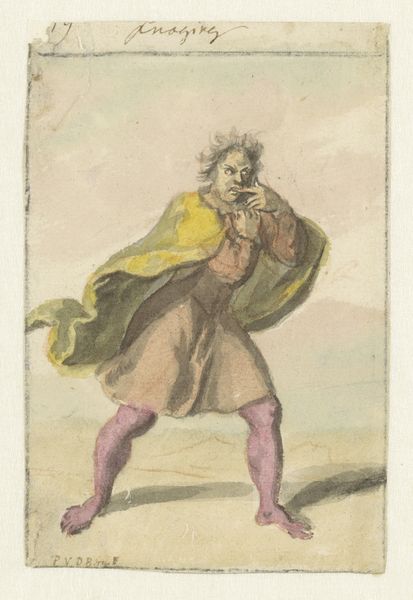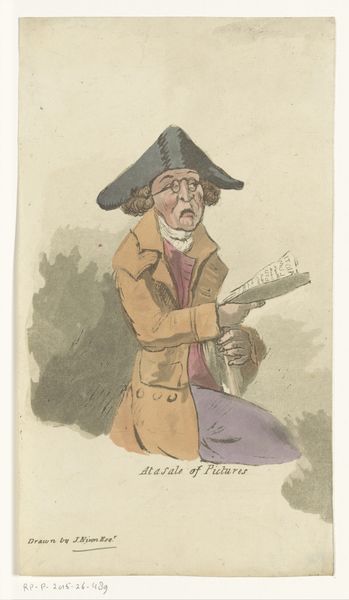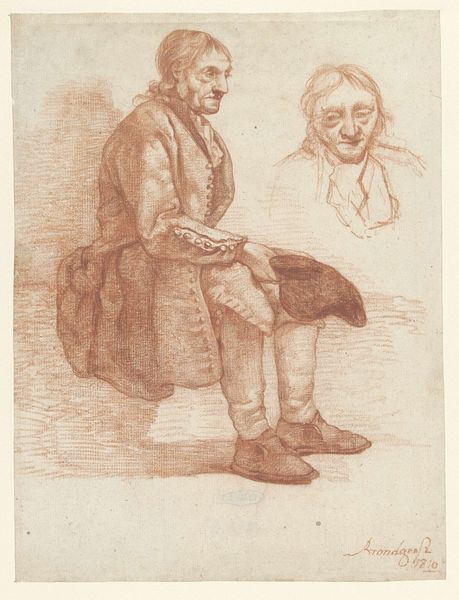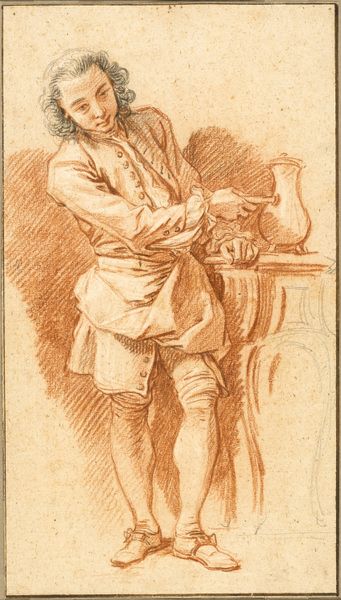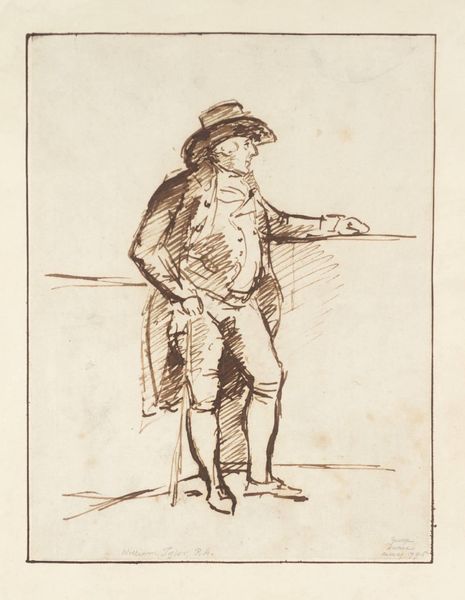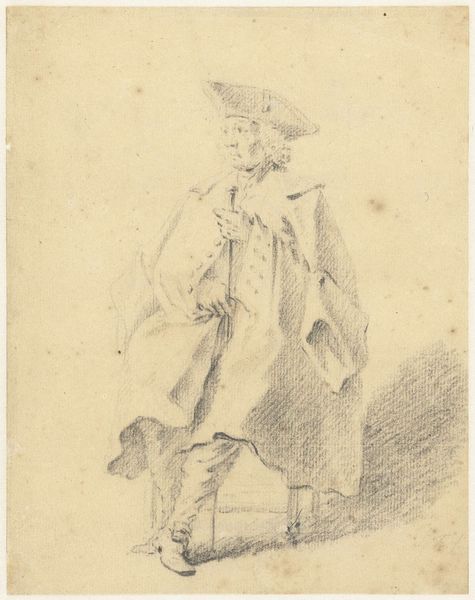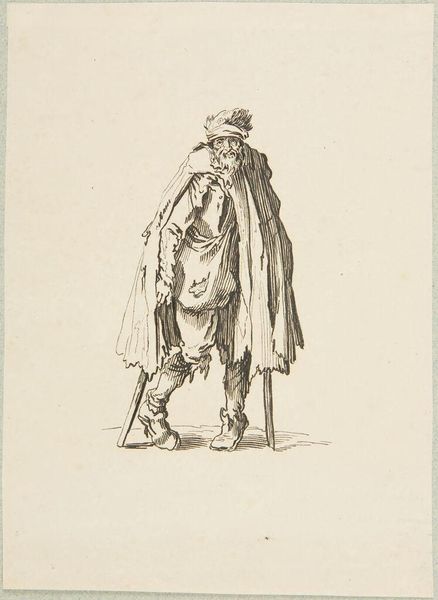
drawing, watercolor, pencil
#
portrait
#
drawing
#
pencil sketch
#
watercolor
#
pencil drawing
#
romanticism
#
pencil
#
portrait drawing
#
genre-painting
#
watercolor
Dimensions: height 237 mm, width 187 mm
Copyright: Rijks Museum: Open Domain
Curator: Here we have "Zittende man steekt zijn pijp aan een test aan"—"Seated man lights his pipe with a test"—created sometime between 1795 and 1857 by Woutherus Mol. It's a watercolor and pencil drawing. Editor: Immediately, I see a man absorbed in his ritual. The textures – the rough paper, the blended watercolor washes, even the way the pencil scratches suggest tweed or felt – evoke a specific era. There's something very tangible about the image; I can almost smell the tobacco. Curator: That tangibility likely stems from the meticulous application of materials. Look at how Mol uses watercolor to create a very subtle shadowing effect on the figure. I find it interesting to study the paper itself—clearly handmade, slightly rough. This reveals not only his access to certain materials but a specific culture of drawing tied to observational study and informal portraiture during that period. Editor: Absolutely. Beyond the craft, the pipe-lighting itself feels significant. Fire has always been deeply symbolic—warmth, domesticity, but also creation and even destruction. And, a man pausing to enjoy his pipe could also represent contemplation, perhaps a moment of quiet reflection amidst a busy day. Is this also a class signifier? Does the pipe tell us something about this person's social standing? Curator: Yes, certainly. Tobacco use in the late 18th and early 19th centuries carried certain social connotations; owning a pipe implied a degree of leisure and perhaps even status. Mol carefully constructs the image to reflect such codes. Observe the subject's coat, buttons, and buckled shoes. The attention given to clothing production is evidence of a specific historical consciousness in how labor and identity are depicted together. Editor: It strikes me that the setting is so sparse. This lack of a specific environment almost forces the viewer to focus on the figure itself, the man's expression as he carefully tends to his pipe. I see a lot of psychological weight there. It could signal introspection but I can also relate it to the tradition of romantic era paintings in Northern Europe which have these subtle details included to generate more thought and curiosity. Curator: I agree. By showing the sitter’s simple act, Woutherus Mol creates a very revealing image that highlights aspects about 19th century labor practices and a man's standing in relation to them. Editor: Seeing how symbols and material elements intersect provides a much deeper reading experience; the drawing captures a universal act filtered through a very specific cultural lens.
Comments
No comments
Be the first to comment and join the conversation on the ultimate creative platform.

